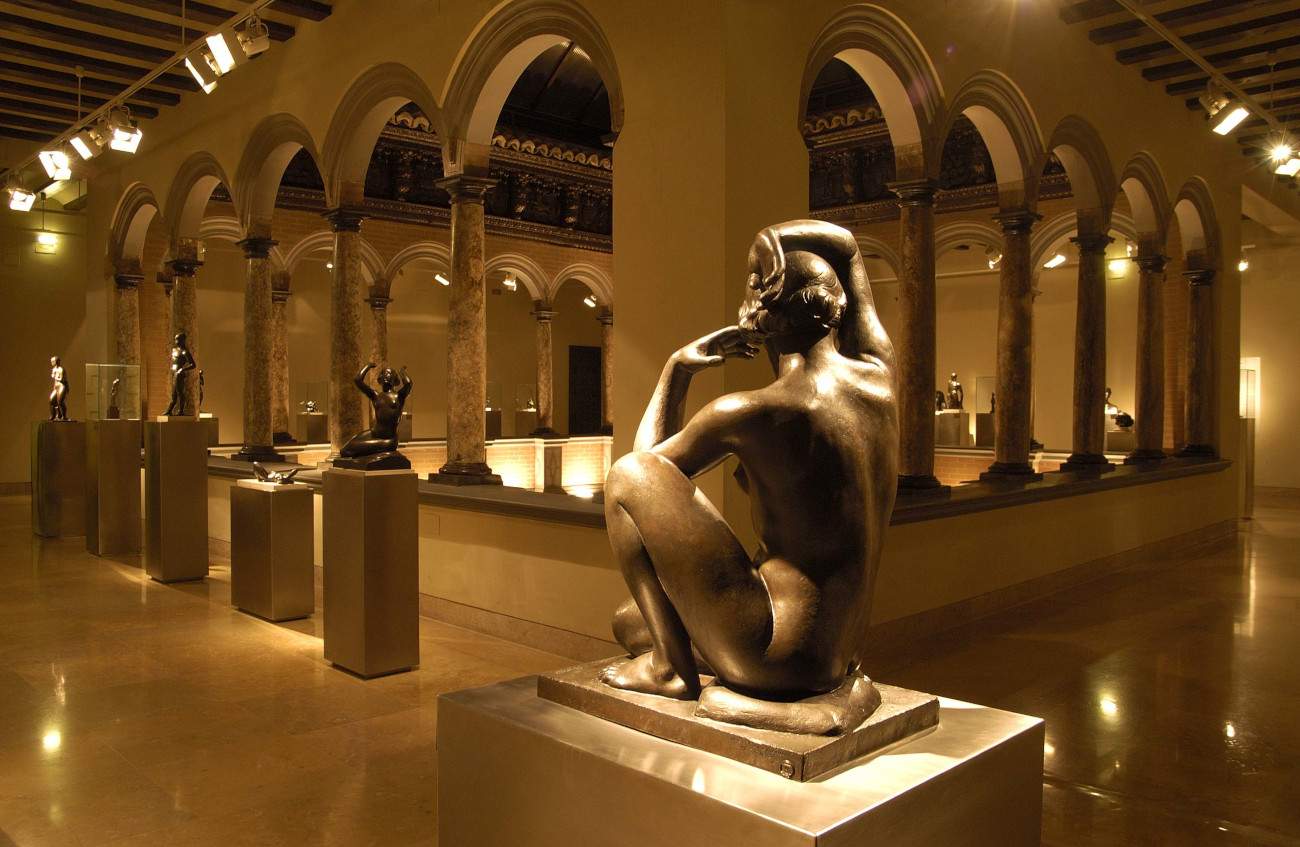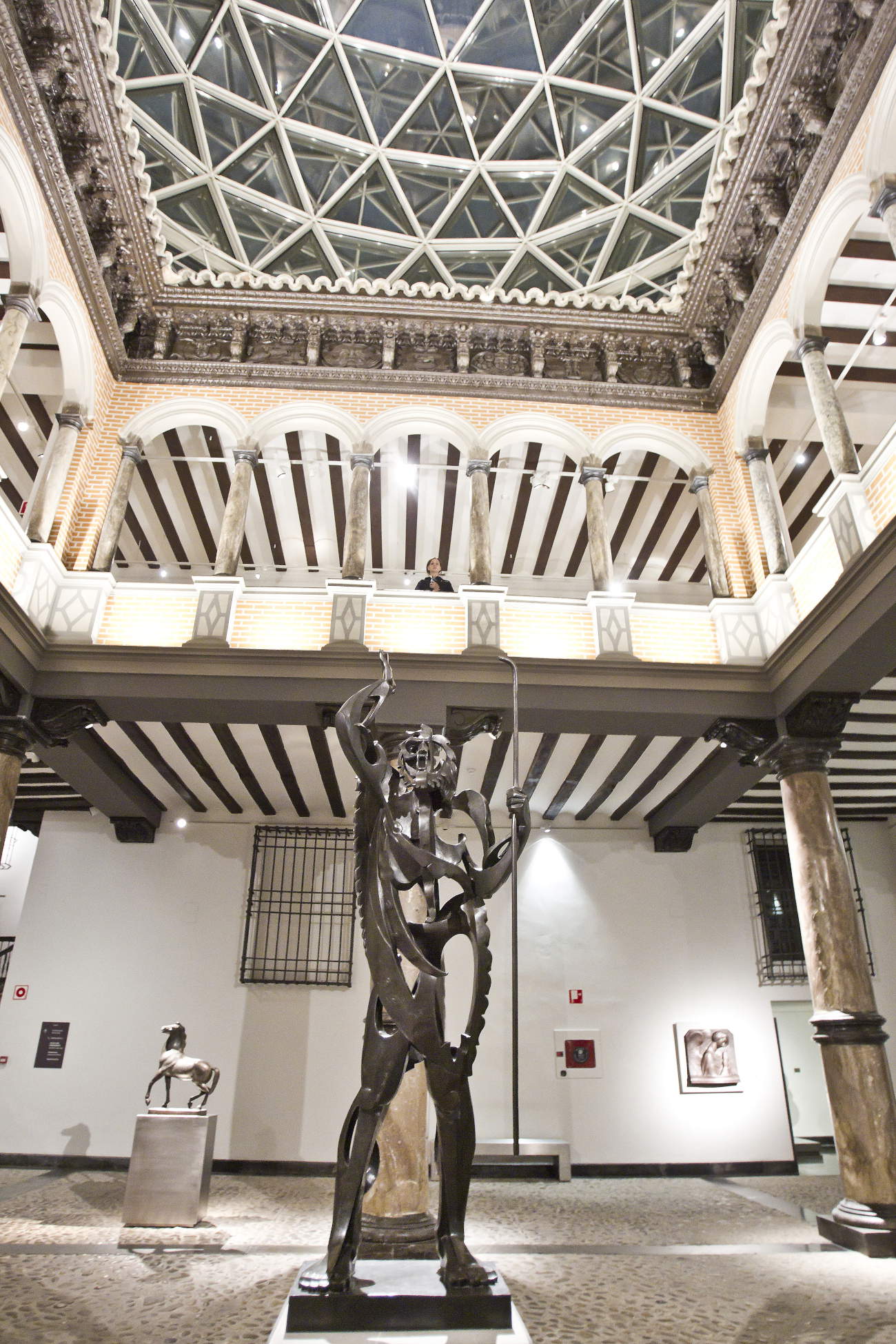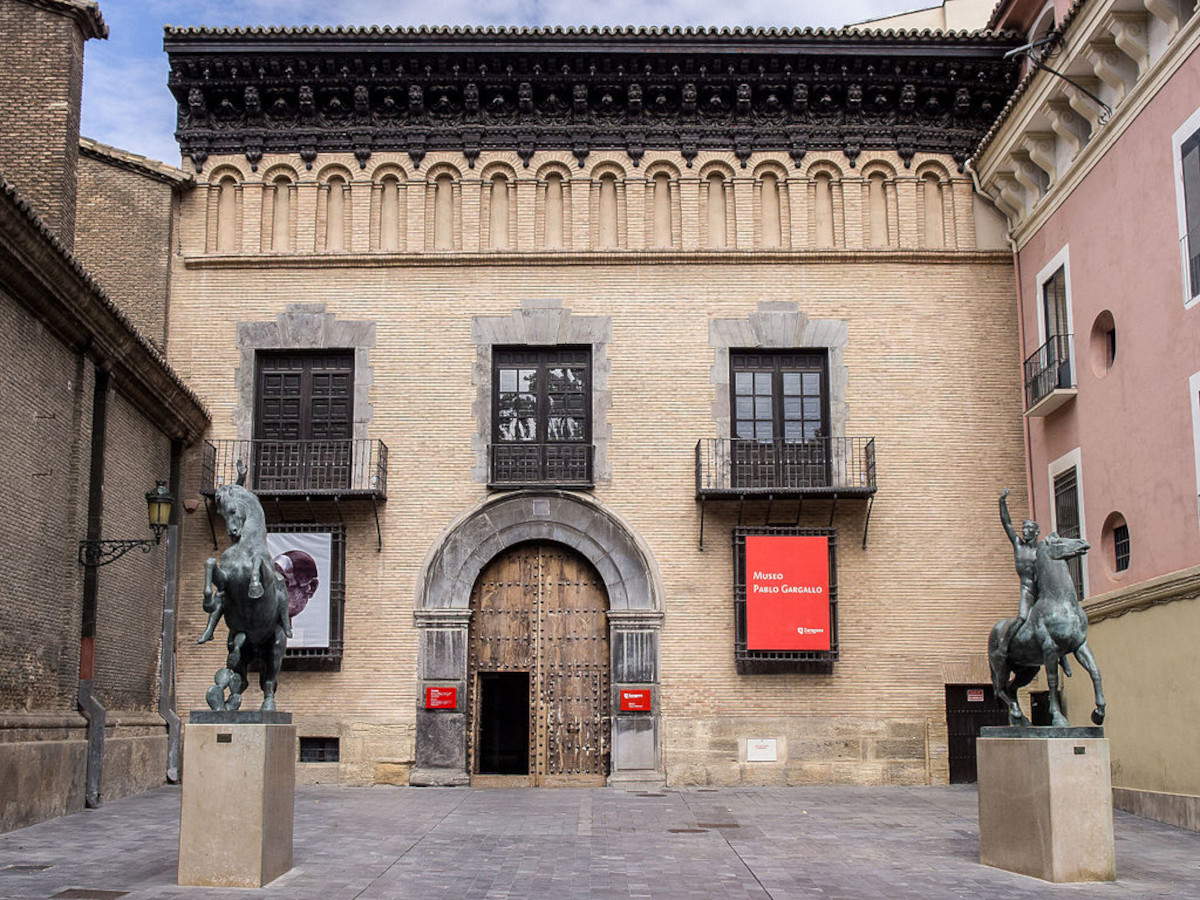Considered one of the most important and influential Spanish sculptors of the 20th century, Pablo Gargallo (Maella, 1881 - Reus, 1934) left an indelible imprint on the Spanish art world through his great skill in shaping metal. Indeed, the Aragonese artist made a strong contribution to the development of modern art with his many innovative works. He is generally placed in the avant-garde group of the School of Paris, as he participated in it, but much of his art was conceived and made in Spain, placing him in the context of the innovative wave that drove the 20th century.
Gargallo began to show an interest in art from an early age. At the age of fourteen, in 1895, Pablo began his working adventure by spending a few months in a ceramics workshop; it was then his maternal uncle, Fidel Catalán, who offered him the opportunity of an apprenticeship with the sculptor Eusebi Arnau i Mascort, albeit without any remuneration. At the same time, he participated in evening drawing classes, manifesting even then an extraordinary talent.
His debut in a group exhibition came in 1898, at the Fourth Exhibition of Fine Arts and Artistic Industries in Barcelona, where he exhibited his relief En la artesa, now housed at the Museu Nacional d’Art de Catalunya (MNAC) in Barcelona. Around 1900, he began attending the Els Quatre Gats art circle, forging ties with artists and intellectuals, including Pablo Picasso. His artistic training took him to the La Lonja school, where he had Agapit Vallmitjana i Barbany as his sculpture teacher. In 1902 he obtained a scholarship to Paris, but the sudden death of his father forced him to give up his dreams of travel and assume the role of breadwinner. Despite adversity, he managed to reach Paris in October 1903, where he immersed himself in the city’s vibrant art scene. It was in Paris in fact that the duality that would be constant in Gargallo’s sculptural work was outlined, though still in an inconclusive stage. He consistently presents himself as a sculptor with a classical imprint, not in the sense of a rigid classicism, but rather as a personal and innovative interpreter of the classical canon. This approach is characterized by a solid traditional training and an excellent mastery of sculptural techniques. However, Gargallo is determined to express himself in an unmistakably personal way within this classicist will, developing a style that is extremely refined and essential in form. At the same time, however, Gargallo fervently devoted himself to the search for new expressive possibilities in form, space and sculptural materials: a search that led him to develop an absolutely original and personal expressive language, steeped in the most universal constants of earlier art, but at the same time characterized by a revolutionary conception of the relationships between volume and space, fullness and emptiness.
His artistic production could be divided into “epochs,” according to the material he used: he mainly used iron and copper, and during his career he moved several times between Paris and Barcelona, but it was in Zaragoza, precisely in La Lonja, in 1919, that he presented his works in Aragonese lands, on the occasion of the Franco-Spanish Exposition of Fine Arts. In Zaragoza, today there is a museum dedicated to him.
On May 19, 1982, Pierrette Gargallo de Anguera, the artist’s daughter, and Ramón Sainz de Varanda, mayor of Zaragoza at the time, signed the Foundation Contract that gave birth to the Pablo Gargallo Museum. In this document, each of the parties made specific commitments: the heirs of Pablo Gargallo pledged to donate sculptures, drawings, cartoons, and bibliographical documentation, while the Municipality of Zaragoza committed to restoring the late Renaissance Palace of the Counts of Argillo to transform it into the museum. The palace was declared a National Monument in 1943 and a Property of Cultural Interest. The museum then opened to the public on July 8, 1985, and its collections were very representative of the artist’s output. This criterion was followed in all subsequent acquisitions, mainly through new donations from heirs. The sculptures, cartoons, drawings, etchings, and jewelry that make up the current collection span all periods of Gargallo’s career, offering the themes, materials, and techniques that characterize him. The collection on display was last expanded in 2014 with the donation of ten original works by the Angera-Gargallo family, all unique pieces.
Prominent among the 107 works housed in the museum are The Great Prophet, The Portrait of Kiki of Montparnasse, and the equestrian figures known as Olympic Salute: Classic Athlete and Modern Athlete.
In 1904, Pablo Gargallo made three drawings depicting a Prophet. These sketches would have a major influence on his later sculpture, particularly on the imposing relief of St. John the Baptist, which he produced between 1906 and 1911 for the frieze of saints on the main facade of the Administration Pavilion of the Hospital de la Santa Cruz y San Pablo in Barcelona. In 1926, the artist produced an intense Head of the Prophet on copper plate. This work probably represented a detailed and significant study in preparation for the creation of the Great Prophet in 1933, which marked the culmination of a creative process that lasted almost thirty years. In this work, Gargallo managed to synthesize significantly much of his concepts in the field of the representation of volume, space and light. Through an artistic journey entirely dedicated to exploring new possibilities and searching for a personal and innovative language, he found unique formal solutions, often exploiting distinctive marks derived from working with the thick iron plates he employed in the last years of his career, so much so that, as a work modeled by casting and always cast in bronze, it still causes some confusion as it is believed to be wrought iron.
The portrait of Kiki de Montparnasse, made in 1928 in bronze, is dedicated Kiki de Montparnasse, a celebrated figure in Paris at the time who frequented artistic circles and served as muse and model for several artists, including Man Ray. Although she never posed for Pablo Gargallo, Kiki nevertheless inspired Gargallo to create one of his most emblematic works: a concave mask to be cast in bronze (the first and only one of his entire production), in which the artist applied many of his most recent artistic discoveries with unparalleled mastery and extraordinary expressive effectiveness, using the most significant and synthetic representations he had experimented with and would continue to master in his future creations, particularly in his sheet metal masks. The museum also preserves a 1928 ink drawing entitled Kiki, which depicts the full figure of Kiki de Montparnasse as she walks through the streets of Paris.
Then there are the two equestrian figures. Both from 1929 in bronze, Olympic Salute: the classical athlete clearly reveals Gargallo’s predilections for archaic elements of classical Greek statuary, transposed with subtlety and great effectiveness. A transformation that reflects his personal and innovative interpretation of classicism in the field of figurative art. The cactus that seems to support the horse recalls the twentieth century era and, inevitably, a Mediterranean atmosphere that permeates the entire figure. This detail adds further depth to the composition, enriching it with symbolic and cultural meanings that underscore the artist’s eclecticism and sensibility. Both this and Olympic Salute: The Modern Athlete were officially commissioned from Gargallo in 1928 in preparation for the 1929 Barcelona International Exhibition for the Montjuich Olympic Stadium. The first original specimens remained on display there from 1929 until 1981, when they were moved to the Palacio de la Virreina in Barcelona for Gargallo’s Centennial Exhibition. They remained there until 1989, then returned to their original location in the Montjuich Stadium. Thanks to the generosity of Gargallo’s heirs and the Barcelona City Council, new specimens were cast. These new works have not only expanded and enriched the collections of the Pablo Gargallo Museum, but have also become the most significant pieces of Zaragoza’s monumental sculptural heritage. Two works that frame the facade invite one to enter the museum itself.
Each sculpture remains a tangible monument to his genius and his unique vision of the world. His creative spirit persists in the sculptures he left behind, testifying to his dedication to art and innovation.



 |
| Pablo Gargallo and his sculptures. In Zaragoza, the museum dedicated to him |
Warning: the translation into English of the original Italian article was created using automatic tools. We undertake to review all articles, but we do not guarantee the total absence of inaccuracies in the translation due to the program. You can find the original by clicking on the ITA button. If you find any mistake,please contact us.